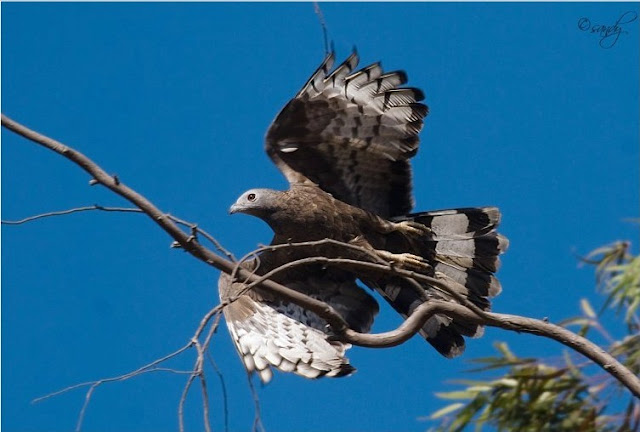 |
| The high flying male. Note the barred undersides of the wings and tail, and the small head and slender neck |
I have spotted the Oriental Honey Buzzard (Pernis ptilorhynchus) in a variety of habitats -- flying high over scrublands, in eucalyptus plantations, over my office campus, and in dense forests. One of my friends was lucky to see one perched on his compound wall.
Its name, of course, comes from its habit of pursuing its favourite diet, the larvae of honey bees and wasps, which it catches by attacking honeycombs. In my mother-tongue, Malayalam, the bird is known as thenkothichi -- literally, she who is greedy for honey. Evidently, those who named it mistook (and romanticised) the raids on the honeycombs as attempts to find honey.
 |
| Female perched. The yellow eye and the dark brown plumage are distinctive |
 |
| Male perched. Note the red eye, pigeon-like head and banded tail |
 |
| Ok, you have seen enough! |
